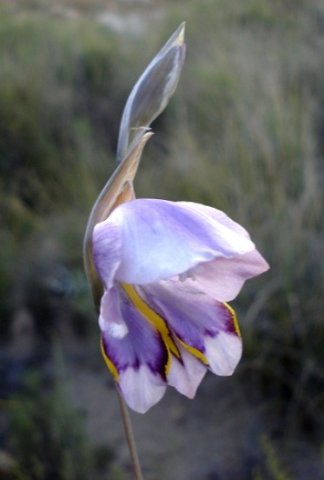Gladiolus patersoniae

Author: Ivan Lätti
Photographer: Judd Kirkel Welwitch
Gladiolus patersoniae, the bluebell or in Afrikaans bakpypie (little baking pipe) and previously scientifically G. inflatus subsp. intermedius, is a cormous, slender perennial that grows to 50 cm. The globose corm is 2 cm in diameter. Its tunic is hard and coarse, the fibres becoming thickened. The flower resembles that of G. inflatus of the Western Cape, but has a shorter corolla tube and is fragrantly scented.
The plant annually produces three thin, quill-like, cylindrical leaves, two of which are basal, usually sheathing the stem near the base. The lowest one is longest, equalling or exceeding the inflorescence slightly. It is usually straight, erect and grooved. The second leaf sheathes the stem for much or all of its length, shorter than the stem. The third leaf sheathes even more, or is scale-like. The leaves are about 3 mm in diameter.
The species occurs in the Western Cape from Worcester but mainly in the Little Karoo to the Eastern Cape as far as Kariega (Uitenhage).
The habitat of the bluebell is montane fynbos and succulent Karoo, often on exposed rocky slopes in soil derived from sandstone. The habitat population is deemed of least concern early in the twenty first century (Vlok and Schutte-Vlok, 2015; Manning, 2009; Goldblatt and Manning, 1998; iNaturalist; www.pacificbulbsociety.org; http://redlist.sanbi.org).

